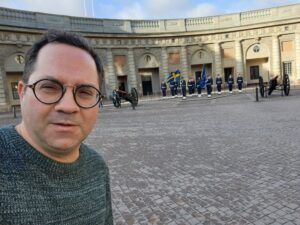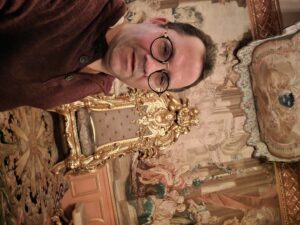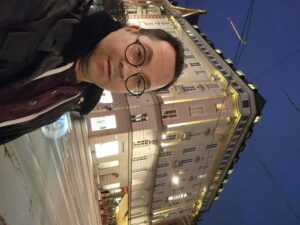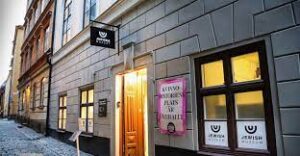Spectacular Sweden
A Wandering Jew Visits Stockholm’s Old Town
Zvi Goelman
Tucked away in Stockholm, Sweden, lies the Old Town, called Gamla Stan. This is the area in which I chose to stay during a recent visit to Sweden, so I could get a sense of the rich history and culture of this Norwegian country.
Arriving in the city on a Thursday morning, I was struck by its Old European charm and cleanliness. I checked into the Hotel Reisen Stockholm, part of the Hyatt hotel chain, which was comfortable and beautiful. Some of the rooms offered private dry saunas, which the hotel staff told me are popular in Scandinavian hotels due to their long and cold winters.
I didn’t have a tour guide, so I planned and explored the city on my own.
I began my first day with a visit to the Royal palace. Stockholm actually boasts two palaces. The Royal Palace is where the jewels are housed, but King Carl, Sweden’s monarch, resides in Drottningholm Palace, also known as the Summer Palace, a 20-minute drive from Old Town. I caught the changing of the guards at the Royal Palace. The guards wore blue uniforms with gold accents and tall black bearskin hats, and they marched in formation as a military band played. Inside the palace, I was able to view the crown jewels, including crowns and jewelry, which were dazzling but did not quite rival the grandeur of their counterparts in England. The Swedish monarchy has a long history, and the current king, King Carl, has been in power since he was 27 years old.
After exploring the palace, I walked to the Nobel Museum, which focuses on the Nobel Prize’s history. There were great interactive displays, and some random ones, including a jar of peanut butter that was autographed by a laureate. The museum wasn’t very big, and I didn’t need a lot of time to get through it. The City Hall of Stockholm hosts the annual Nobel Prize ceremony. I didn’t get a chance to visit, but I saw it from the outside.
Next up on my self-made itinerary was Judiska Museet, the Jewish Museum. Now strictly a museum, it is located where the first shul once was, dating back to the late 1700s. Over time, it was transformed into a museum with exhibitions about the Swedish Jewish community, including the events of World War II. I always knew that Sweden was welcoming to Jews, and that they played a role in rescuing Danish Jews during the Holocaust, but the museum also describes the anti-Semitism in Uppsala in 1939, and the restrictive immigration policy that kept East European Jews from entering during that period. I learned about Aaron Isaac, a famous steel engraver who was brought in during the reign of Gustav the Third, on condition that a minyan accompany him. The museum was well-organized, and I enjoyed seeing paintings of the shul members of long-ago in what used to be the ezras nashim.
At the Vasa Museum I was able to view a nearly intact, enormous ship from the 1700s. When the ship was built, the king ignored warnings from its designers and insisted on adding more cannons, making it too top-heavy. Less than 20 minutes into its voyage, it capsized and sank. Incredibly, the ship was salvaged from the ocean bottom, despite its size. The ship is made of wood and is full of carvings. It’s quite a sight.
Shabbos begins very early in the winter, and very late in the summer. When I visited, the zman was at 2:30 P.M.! By 3:30 it was completely dark. Despite the early zman, davening began at 5:30 P.M at Adat Israel run by the local Chabad rabbi, Rabbi Chaim Greisman, who explained to me that Shabbos observance is a struggle for many of the local Jews. The shul is known as the Polish minyan and dates back to 1871, when it was established by Polish Jews who fled to the region. Its current building was built in 1917 and is not ornate but has plenty of old European appeal. There were only about 15 men at Friday night minyan, but they told me that on Shabbos morning the shul is packed.
On Shabbos morning, I walked to Adat Jeschurun. Rabbi Greisman serves as the Rav of this shul as well so he can maintain a relationship with both kehillos. The shul serves as the Jewish community center, which includes a small restaurant, café, and grocery store. There was a bar mitzvah in shul that Shabbos, which gave me an opportunity to interact with a lot of people from the community.



On Sunday, I visited Drottningholm Palace, also known as the Summer Palace, where King Carl resides. I couldn’t enter the palace, so I admired its architecture from the outside. The palace has light yellow walls and is located at the edge of a lake and surrounded by sprawling gardens.
I made sure to see the location of the famous bank robbery, the site of a 1973 hostage situation that led to the term “Stockholm syndrome, a condition in which people develop positive feelings towards their captors. While there is no longer a bank at that spot, I took a picture and found the historical context intriguing.
In terms of the overall architecture and atmosphere, Stockholm felt like a typical old European city. The old palace resembled Buckingham Palace in terms of its ornateness, but it was not as large. The Swedish people don’t exhibit the same level of enthusiasm for the monarchy as the English do, and the changing of the guards at the palace was a more low-key event with fewer spectators.
During my visit in November, the crowds were much smaller compared to the bustling tourist season. Only around 30 people gathered to watch the changing of the guards, unlike the large crowds you would encounter at Buckingham Palace. The weather in Stockholm during November was similar to that of New York, with cool temperatures and autumn vibes.



While Stockholm has seen an influx of immigrants from Muslim-majority countries in recent years, the Old Town and its immediate surroundings are predominantly Swedish, and most of the people I passed in its streets were friendly and polite with distinctively Nordic features. The streets in Gamla Stan were extremely clean and well-maintained. It was quite different from my subsequent visit to Germany, where I found the streets dirty and graffiti ridden.
The highlight of every trip I take is meeting the local Jewish community and making new friends from all over the globe. Stockholm was no exception. I had no problem communicating with the locals because they all speak English, and thanks to social media, I’m grateful to maintain that connection.
You must be logged in to post a comment.